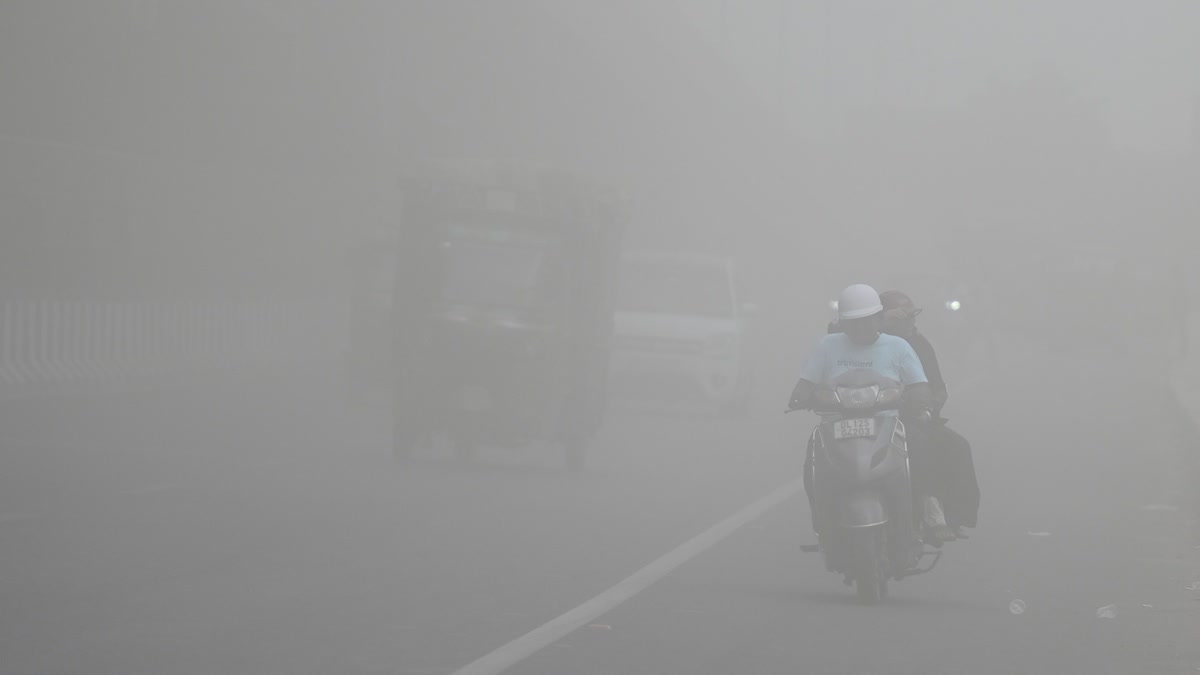Hyderabad: Recognizing that sand and dust storms and their negative impacts at different scales are issues of international concern, at Iran’s initiative, the United Nations General Assembly proclaimed July 12 as the International Day of Combating Sand and Dust Storms.
Sand and dust storms (SDS) have increased dramatically in frequency and severity in recent years, according to the United Nations. In 2022, dust storms affected countries from Turkey to Oman, hitting Iraq particularly badly. Iraq was hit by 10 dust storms between April and June 13, 2022 and over 5,000 people were hospitalized.
The U.N. General Assembly declared 2025 to 2034 the United Nations Decade on Combating Sand and Dust Storms — extreme weather events that are increasing and threatening health and economies from central Africa to northern China.
Sand, Dust Storms Linked To Sustainable Development Goals: Sand and dust storms (SDS) present a formidable and wide-spread challenge to achieving sustainable development in its economic, social and environmental dimensions. They have become a serious global concern in recent decades due to their significant impacts on the environment, health, agriculture, livelihoods, and socio-economic well-being. Sand and dust storms are an essential element of the Earth’s natural bio-chemical cycles, but are also caused in part by human-induced drivers, including climate change, and unsustainable land management and water use. In turn, sand and dust storms contribute to climate change and air pollution. Sand and dust storms’ impacts are felt in all regions of the world, both in developed and developing countries, and pose severe challenges to achieving 11 of the 17 Sustainable Development Goals, especially:
Zero hunger
- Health
- Water and sanitation
- Economic growth
- Climate action, and
- Biodiversity forests and desertification.
Sand, Dust Storms In India
Sand and dust storms impact over 500 million in India. Sand and dust storms are prevalent in northwest India, particularly Rajasthan, Punjab, Haryana, and Gujarat. They are most frequent during the pre-monsoon season (March to May), when temperatures are high, and strong winds blow across dry landscapes.
Dust Storm In Delhi, Mumbai, Gujarat: Dust storms have created havoc at various places of India including both the national and financial capitals of India. Delhi was enveloped in sand on May 11, 2024 while Mumbai was struck with deadly winds followed by heavy rainfall. Other than Delhi and Mumbai, storm situations and unseasonal rains happened in parts of Gujarat as well.
According to the Police, a dust storm in Delhi claimed 2 lives, and 23 were injured. It uprooted around a hundred trees in the city.
University of Reading Says It Is Danger to Aircraft: A new study led by researchers from the University of Reading has revealed that planes arriving at Delhi's Indira Gandhi International Airport are ingesting large amounts of dust which is accumulating in their engines over time and can cause serious damage to them.
Use of AI in Forecasting: Researchers in the field are using artificial intelligence (AI) and climate modeling to better predict annual events. Better forecasting can save crores of rupees every year.
What Caused Unusual Dust Storms In India?:
Drought: Prolonged dry periods result in dried-out soils, which are more susceptible to wind erosion.
- Wind: Strong winds are the primary drivers of sand and dust storms, capable of lifting particles into the air.
- Vegetative Cover: Lack of vegetation exposes soil to wind, making it easier for winds to pick up loose particles.
- Geomorphology: The physical characteristics of a region, including its soil composition and surface roughness, influence its susceptibility to dust storms.
Desertification and drying riverbeds are some of the major causes of increased dust storm frequency in India. Both factors are linked to climate change.
- Desertification is caused due to deforestation, or overgrazing. This results in climate change and also loosens the soil. Desertification is the reason that exposes the soil and makes it ‘defenseless’ against the wind to get carried away by it.
- Other than that, climate change and overconsumption, followed by several Other factors have resulted in the drying up of riverbeds. It again reduces water flow in rivers and exposes large areas of dry sand.
Sand, Dust Storms & Agriculture: About 25 percent of global dust emissions are caused by human activities, with agriculture as probably the most important driver. Sand, Dust Storms also have numerous direct negative impacts on agriculture, resulting in the loss of crops, trees and livestock or significant decreases in their production.
Sand, Dust Storms Impact Air Quality & Health:
SDS are recurring environmental phenomena which reduce air quality, visibility and are reported to have adverse effects on health worldwide.
- Inhalation of fine particles carried by these storms can lead to respiratory issues, allergies and other health problems.
- A global scientific review published in March 2023 found considerable evidences of the health effects of desert dust and sand storms, especially for respiratory and cardiovascular mortality and morbidity causes.
Key Facts:
About 2 million tons of sand and dust enter the atmosphere annually
- SDS occurs mostly in arid and desert regions, but it can spread over long distances to reach very distant areas.
- The dust particles spread by SDS provide nutrients to marine ecosystems, but they can also contribute to coral death and storm surge
- SDS can cause respiratory diseases, cardiovascular disorders, eye and skin irritation, and other diseases such as meningitis
- SDS can disrupt aviation and ground transportation
- SDS can affect agricultural practices and productivity, which can also contribute to the process of desertification
- Sustainable water and land management practices can reduce the effects of SDS



